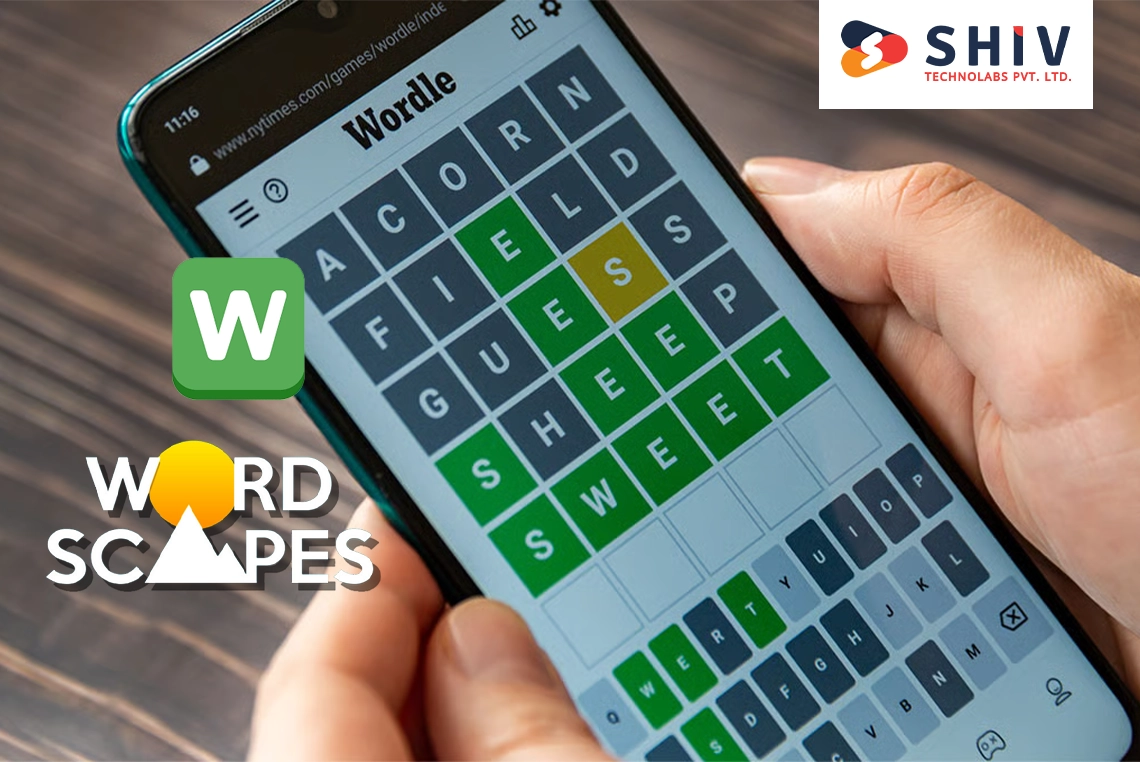Table of Contents
In recent years, the financial technology (fintech) sector has experienced impressive growth, driven by technological advancements and evolving consumer expectations. Fintech applications are now crucial in transforming how individuals and businesses manage their finances, offering greater convenience, transparency, and efficiency compared to traditional methods. As digital transformation continues to shape the financial industry, the design and functionality of fintech apps are vital to their success.
Creating a successful fintech app involves more than designing an intuitive interface. It requires a careful balance of security, functionality, and user experience to address the varied needs of its users. For developers and businesses aiming to make a significant impact, understanding the key features of effective fintech applications is essential. Incorporating these elements in mobile app development is crucial for achieving success in this competitive field.
The fintech sector is projected to reach a valuation of $5 trillion by 2025, reflecting a dramatic shift in how financial services are delivered and consumed. With such rapid growth, fintech applications are becoming increasingly essential in the financial ecosystem. According to recent studies, nearly 75% of users expect their fintech apps to provide real-time transaction updates, secure data handling, and an intuitive user experience. These expectations highlight the importance of incorporating core features and cutting-edge technology in both Android and iOS app development to meet the demands of a growing user base.
In addition, the adoption of fintech apps is rapidly increasing, with over 50% of adults in developed markets using at least one fintech service regularly. This surge in usage underscores the need for skilled Android app developers and iOS app developers to create applications that not only meet functional requirements but also offer a superior user experience. As the fintech industry continues to expand, the role of app developers becomes crucial in delivering secure, efficient, and user-friendly financial solutions.
Popular Types Of Fintech Apps

The fintech sector encompasses a wide range of applications, each serving distinct purposes and addressing various financial needs. Here’s an overview of some of the most common types of fintech apps:
- Payment Processing Apps: Payment processing apps are designed to facilitate transactions between individuals, businesses, and service providers. These apps streamline the payment process, enabling users to send and receive money with ease. They often include features such as digital wallets, QR code scanning, and integration with bank accounts or credit cards.
- Personal Finance Management Apps: Personal finance management apps help users track and manage their spending, budgeting, and savings. These apps offer insights into financial behavior, categorize expenses, and provide tools for setting financial goals.
- Investment and Trading Apps: Investment and trading apps allow users to buy and sell financial assets such as stocks, bonds, and cryptocurrencies. They often include features like real-time market data, trading signals, and portfolio management tools.
- Robo-Advisors: Robo-advisors use algorithms to provide automated investment advice and portfolio management. These apps assess users’ financial goals and risk tolerance to recommend personalized investment strategies.
- Lending and Borrowing Apps: Lending and borrowing apps connect borrowers with lenders, often bypassing traditional financial institutions. These apps can include peer-to-peer lending platforms, payday loans, and micro-loans.
- Insurance Tech Apps: Insurance tech apps streamline the process of purchasing, managing, and claiming insurance policies. They often feature tools for comparing policies, filing claims, and tracking insurance coverage.
- Blockchain and Cryptocurrency Apps: Apps in this category focus on the management, trading, and utilization of digital currencies and blockchain technology. They include cryptocurrency wallets, exchanges, and blockchain-based applications.
- Regtech (Regulatory Technology) Apps: Regtech apps assist financial institutions in meeting regulatory requirements and ensuring compliance. They provide solutions for risk management, fraud detection, and regulatory reporting.
- Wealth Management Apps: Wealth management apps cater to high-net-worth individuals and investors seeking sophisticated financial planning and advisory services. These apps often include advanced analytics, investment tracking, and financial forecasting.
- Banking Apps: Banking apps offer a range of banking services, including account management, fund transfers, and bill payments. They often feature user-friendly interfaces and secure access to account information.
Also read : Step-By-Step Guide To Building A Fintech App
20 Must-Have Features In A Fintech App

Creating a fintech app that stands out in a competitive market involves integrating essential features that address user needs and provide a superior experience. Here’s a detailed look at 20 crucial features that can contribute to the success of a fintech app:
1. User Authentication and Security
Security is the cornerstone of any fintech application. To protect users’ financial data and personal information, implement advanced authentication methods such as multi-factor authentication (MFA). MFA requires users to verify their identity through multiple steps, such as a password plus a code sent to their phone. Additionally, biometric options like fingerprint and facial recognition can further improve security. Encryption protocols should be used to safeguard data during transmission and storage, preventing unauthorized access and potential breaches.
- Multi-factor Authentication (MFA): Requires multiple forms of verification, adding an extra layer of security.
- Biometric Verification: Utilizes fingerprint or facial recognition for quick and secure access.
- Encryption Protocols: Protects data during transmission and storage to prevent unauthorized access.
2. Intuitive User Interface (UI)
The design of the user interface (UI) significantly impacts user satisfaction. An intuitive UI makes sure that users can navigate the app with ease, finding the features they need without confusion. This involves a clean layout, logical flow of information, and easy-to-understand icons and labels. A well-designed UI should prioritize user experience by simplifying interactions and minimizing the number of steps required to complete tasks.
- Clean Layout: Organizes information clearly and reduces clutter.
- Logical Flow: Guides users naturally through tasks and features.
- Easy-to-Understand Icons: Helps users quickly identify and use app functions.
3. Personalized Dashboard
A personalized dashboard offers users a snapshot of their financial status at a glance. This feature can display key information such as account balances, recent transactions, and financial goals. Customizable widgets allow users to arrange their dashboard according to their preferences, making it easier to access the most relevant information. This personalization improves user engagement by presenting data in a way that aligns with their individual needs.
- Snapshot of Financial Status: Provides a quick overview of account balances and recent activities.
- Customizable Widgets: Allows users to personalize the dashboard layout.
- Relevant Information: Displays key data based on user preferences.
4. Real-Time Notifications
Real-time notifications are essential for keeping users informed about important financial events. These alerts can include transaction confirmations, balance updates, and reminders for upcoming bills or payments. Customizable notification settings allow users to choose which alerts they receive and how they are delivered, whether through push notifications, emails, or text messages. Timely updates help users stay on top of their financial activities and make informed decisions.
- Transaction Confirmations: Notifies users immediately about completed transactions.
- Balance Updates: Provides real-time updates on account balances.
- Customizable Alerts: Allows users to select preferred notification types and delivery methods.
5. Advanced Analytics and Reporting
Advanced analytics and reporting tools provide users with insights into their financial behavior and performance. These features can include visualizations such as charts and graphs that illustrate spending patterns, budgeting progress, and investment performance. By offering detailed reports and analytics, the app helps users understand their financial habits, identify trends, and make data-driven decisions to improve their financial health.
- Visualizations: Use charts and graphs to illustrate financial data.
- Detailed Reports: Provide in-depth insights into spending and budgeting.
- Data-Driven Decisions: Helps users make informed choices based on analytics.
6. Easy Fund Transfers and Payments
Facilitating easy fund transfers and payments is a core function of fintech apps. Users should be able to quickly and securely transfer money between accounts, pay bills, and make purchases. Integration with various payment methods, including bank transfers, credit and debit cards, and digital wallets, offers flexibility. The app should also support features like scheduling recurring payments and setting up automatic bill payments to simplify financial management.
- Quick Transfers: Allows fast and secure movement of funds between accounts.
- Payment Flexibility: Supports multiple payment methods including digital wallets.
- Recurring Payments: Enables scheduling of regular payments and bills.
7. Integration with Financial Institutions
Integrating with various banks and financial institutions allows users to manage multiple accounts from within a single app. This feature provides a unified view of all financial activities, making it easier to track and manage funds. The integration should support real-time synchronization to make sure that account information is up-to-date and accurate. By connecting with a wide range of institutions, the app can cater to users’ diverse financial needs.
- Unified View: Aggregates account information from multiple institutions.
- Real-Time Synchronization: Ensures accurate and up-to-date account data.
- Wide Range of Institutions: Connects with various banks and financial services.
8. Customizable Alerts and Reminders
Customizable alerts and reminders help users stay organized and manage their financial responsibilities effectively. Users can set up notifications for important tasks such as bill payments, savings goals, and upcoming transactions. The ability to customize alert settings allows users to choose the frequency and type of notifications they receive, ensuring that they stay informed about their financial obligations without being overwhelmed.
- Personalized Notifications: Allows users to set alerts for specific tasks.
- Flexible Settings: Customizes frequency and type of notifications.
- Financial Management: Helps users stay on top of important financial events.
9. Expense Tracking and Categorization
Expense tracking and categorization features help users monitor their spending habits and manage their finances more effectively. The app should allow users to categorize their expenses into predefined or custom categories, providing insights into where their money is going. Features like automatic transaction categorization and expense tagging make it easier for users to track and analyze their spending patterns, aiding in budgeting and financial planning.
- Categorization: Organizes expenses into predefined or user-defined categories.
- Automatic Categorization: Classifies transactions automatically for ease of tracking.
- Expense Tagging: Allows users to label and track specific spending.
10. Budgeting Tools
Budgeting tools assist users in planning and managing their finances by setting and tracking budgets for various categories. Users can create budgets for different spending areas, such as groceries, entertainment, and transportation, and monitor their progress. Visual aids like pie charts and bar graphs can help users see how well they are adhering to their budgets. Effective budgeting tools provide insights into overspending and help users make adjustments to stay within their financial limits.
- Budget Creation: Allows users to set budgets for different expense categories.
- Progress Tracking: Monitors how well users stick to their budgets.
- Visual Aids: Uses charts and graphs to display budgeting data.
11. Customer Support and Assistance
Customer support is important for addressing user concerns and solving issues promptly. The app should offer multiple support channels. A comprehensive help center with FAQs, troubleshooting guides, and how-to articles can also assist users in finding solutions independently. Providing timely and effective customer support improves user satisfaction and builds trust in the app.
- Multiple Support Channels: Provides in-app chat, email, and phone support.
- Help Center: Includes FAQs, guides, and how-to articles.
- Timely Assistance: Ensures prompt resolution of user issues.
12. Transaction History
Access to detailed transaction history is essential for users to review their past financial activities. The app should provide a clear and organized view of transactions, including date, amount, and description. Search and filter options allow users to find specific transactions quickly. Transaction history is crucial for budgeting, reconciling accounts, and tracking spending over time.
- Detailed View: Shows transaction details including date and amount.
- Search and Filter: Helps users find specific transactions efficiently.
- Account Reconciliation: Assists in matching transactions with account records.
Also read : How to Optimize Mobile Apps for Better Performance
13. Investment Management
For fintech apps that offer investment services, features like portfolio management, real-time market data, and investment tracking are crucial. Users should be able to view their investment holdings, monitor performance, and receive updates on market trends. Investment management tools may also include features for setting investment goals, risk assessment, and making informed investment decisions.
- Portfolio Management: Allows users to track and manage their investments.
- Real-Time Market Data: Provides up-to-date information on market trends.
- Investment Goals: Helps users set and track investment objectives.
14. Secure Data Storage
Secure data storage practices are essential for protecting user information. The app should employ encryption techniques to safeguard sensitive data, such as financial records and personal details. Access controls and regular security audits help prevent unauthorized access and potential data breaches. Ensuring data security is critical for maintaining user trust and complying with regulatory requirements.
- Data Encryption: Protects sensitive information during storage.
- Access Controls: Limits access to authorized personnel only.
- Regular Security Audits: Identifies and addresses potential vulnerabilities.
15. Multi-Currency and Multi-Language Support
Multi-currency and multi-language support can significantly expand the app’s appeal to a global audience. Users should be able to conduct transactions and view information in their preferred currency and language. This feature is particularly important for apps operating in multiple countries or regions, as it improves usability and accessibility for diverse user groups.
- Currency Support: Enables transactions in multiple currencies.
- Language Options: Provides information in various languages.
- Global Usability: Increases appeal to international users.
16. API Integrations
Integrating with third-party services through APIs can add valuable functionality to the app. For example, integration with tax services can help users prepare their tax returns, while connections to investment platforms can provide additional investment opportunities. APIs can also be used to incorporate financial news, market data, and other relevant information into the app, offering users a more comprehensive financial experience.
- Tax Services Integration: Assists with tax preparation and filing.
- Investment Platforms: Provides additional investment opportunities.
- Financial News and Data: Incorporates relevant information into the app.
17. User Data Privacy
Protecting user data privacy is essential for maintaining trust and complying with regulations. The app should have clear privacy policies that explain how user data is collected, used, and shared. Users should have control over their privacy settings and be able to manage permissions related to their data. Transparent practices and adherence to data protection laws are crucial for building and retaining user confidence.
- Privacy Policies: Clearly outline data collection and usage practices.
- User Control: Allows users to manage their privacy settings and permissions.
- Compliance with Laws: Adheres to data protection regulations.
18. Compliance with Regulations
Compliance with financial regulations and standards is necessary for the app’s legitimacy and user trust. The app should adhere to laws related to financial transactions, data protection, and user rights. Features that support regulatory compliance include secure data handling, fraud detection mechanisms, and transparent reporting practices. Staying compliant with regulations helps avoid legal issues and making sure the app operates within the legal framework.
- Regulatory Adherence: Complies with financial and data protection laws.
- Fraud Detection: Includes mechanisms to identify and prevent fraudulent activities.
- Transparent Reporting: Provides clear and accurate reporting practices.
19. Offline Functionality
Offering offline functionality can improve the user experience, especially in areas with limited internet connectivity. Features such as access to previously viewed information, transaction history, and budgeting tools should be available even when the user is offline. Providing offline access helps users stay connected to their financial data and manage their finances regardless of their internet connection.
- Offline Access: Allows viewing of previously accessed information.
- Transaction History Availability: Provides access to past transactions without an internet connection.
- Budgeting Tools: Offers functionality for managing finances offline.
20. Integration with Financial Planning Tools
Integrating with financial planning tools can provide users with additional resources for managing their finances. Features like retirement calculators, savings goal planners, and debt reduction strategies can help users make informed financial decisions and plan for the future. By offering these tools within the app, users can access a comprehensive suite of financial planning resources in one place.
- Retirement Calculators: Assists users in planning for retirement savings.
- Savings Goal Planners: Helps users set and track savings objectives.
- Debt Reduction Strategies: Provides tools for managing and reducing debt.
Conclusion
Creating a fintech application that stands out requires a blend of essential features and a deep understanding of user needs. From securing user data with advanced authentication to providing intuitive interfaces and comprehensive financial tools, each feature plays a crucial role in ensuring a successful fintech app. Integrating elements such as real-time notifications, customizable alerts, and easy fund transfers can significantly increase user experience and engagement. As financial technology continues to evolve, incorporating these key features will not only meet user expectations but also set the app apart in a competitive market.
Developers and businesses looking to build or refine their fintech applications should keep these elements in mind to create a platform that is both functional and user-friendly. Whether it’s for personal finance management or investment tracking, a well-designed fintech app can make a significant difference in how users manage their financial lives.
For businesses aiming to create a cutting-edge fintech application, Shiv Technolabs stands out as a leading choice. Specializing in mobile app development in Saudi Arabia, Shiv Technolabs combines industry expertise with innovative technology solutions to deliver high-quality fintech apps. Their team excels in crafting applications with the latest features, ensuring security, user-friendliness, and performance. Partner with Shiv Technolabs to transform your fintech ideas into reality and provide users with an exceptional financial management experience. Reach out today to start developing your next fintech solution with a trusted partner in mobile app development.



















